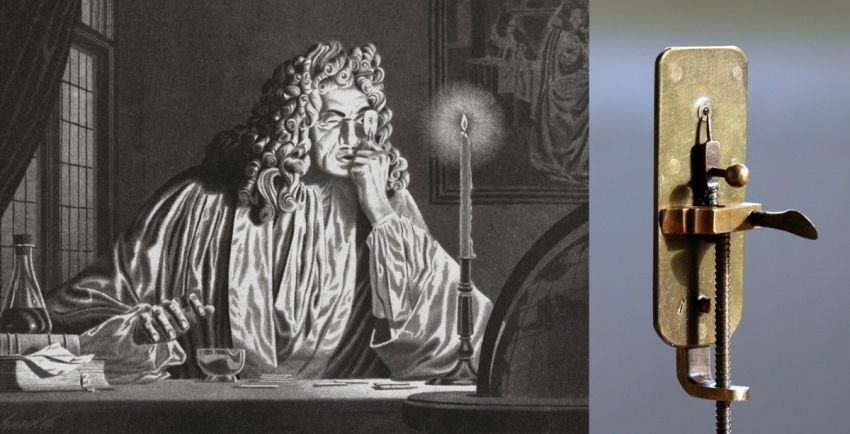Prior to the actual discovery of microorganisms in the 17th century, the idea that they might exist was debated for many centuries. Based on the teachings of Mahavira, Jainism proposed the existence of invisible microbiological life as early as the sixth century BCE. The Roman scholar Marcus Terentius Varro was the first to propose the possibility of disease spreading by organisms that have not yet been discovered in his book On Agriculture, written in the first century. He cautions against setting up a homestead close to swamps in his book, stating that “some tiny creatures that are invisible to the human eye have been bred to float in the air, enter the body through the mouth and nose, and cause serious diseases.” Abū Alī ibn Sīnā (Avicenna) postulated in The Canon of Medicine (1020) that tuberculosis and other illnesses might be communicable. Girolamo Fracastoro postulated in 1546 that infectious agents that could spread through direct or indirect contact, or even without contact over great distances, were the source of epidemic diseases. These early assertions regarding the existence of microorganisms were all conjectural and unsupported by any evidence or scientific study. It wasn’t until the 17th century that microorganisms were proven, observed, and properly and accurately described. This was because there was no microscope available for any of these early investigations.

Save citation to file Format:
- Create a new collection
- Add to an existing collection
Name your collection: Name must be less than 100 characters Choose a collection: Unable to load your collection due to an error
Add to My Bibliography
- My Bibliography
Unable to load your delegates due to an error
Your saved search Name of saved search: Search terms:
- Create a new collection
- Add to an existing collection
Name your collection: Name must be less than 100 characters Choose a collection: Unable to load your collection due to an error
- Department of History and Biology, First
- Department of History and Biology, First
The discovery of microscopic organisms was made between 1665 and 1683 by two Fellows of The Royal Society, Antoni van Leeuwenhoek and Robert Hooke. Hooke published the first description of a microganism, the microfungus Mucor, in Micrographia (1665). Later, Leeuwenhoek observed and described microscopic protozoa and bacteria. The inventiveness of Hooke and Leeuwenhoek in creating and utilizing basic microscopes that magnified objects from roughly 25 to 250 times made these significant discoveries possible. After a break of over 150 years, microscopy was the key to our comprehension of the roles that microbes play in the development of infectious diseases and the biosphere’s recycling of chemical elements.
Personal name as subject
FAQ
Who observed the first microorganism?
The discovery of microscopic organisms was made between 1665 and 1683 by two Fellows of The Royal Society, Antoni van Leeuwenhoek and Robert Hooke.
Who is credited with first observing microorganisms quizlet?
The first microbiologist to use a microscope to look for microorganisms in environmental samples was Anton van Leeuwenhoek.
Who is the first founder of microbiology?
The father of microbiology is a Delft cloth trader named Antoni van Leeuwenhoek (1632–1723). He explored the invisible world of microorganisms using homemade microscopes. The father of microbiology is a Delft cloth trader named Antoni van Leeuwenhoek (1632–1723).
Who first used microscopes to observe microorganisms?
Ten years following the release of Micrographia, the Dutch scientist Antonie van Leeuwenhoek—often referred to as the “Father of Microbiology”—became the first to use a microscope to view bacteria.
Read More :
https://quizlet.com/116816370/microbiology-ch1-flash-cards/
https://pubmed.ncbi.nlm.nih.gov/15209075/